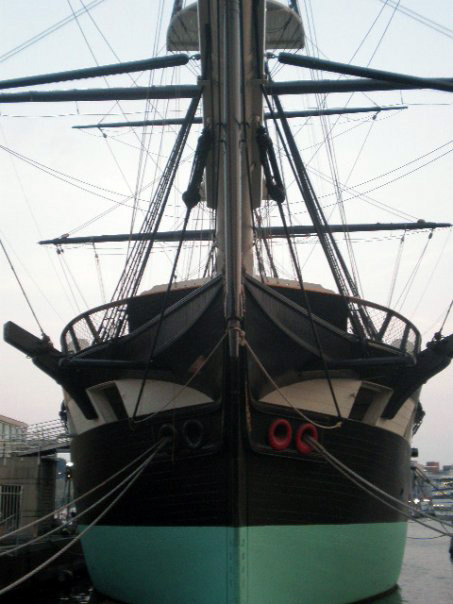
- Notes from the curious language of wood boatbuilding
This is only my opinion, but wood boats are gorgeous.
Wood is natural, wood is organic, wood simply better conforms and wraps itself to the complex bends and 3D curves that can make a wood boat seem stunning and classic, while its newer fiberglass cousin bobs around like a half-sunk bleach bottle.
Trouble is, there's not a major manufacturer hand-building wood boats any more. So what's the aspiring boatbuilder to do?
-- --- --
Anyone with the slightest interest in boats has surely entertained the notion of building their own from scratch; Amazon has a long list of books devoted to the craft of backyard boatbuilding.
But as easy as the authors can make building-your-own sound, there's more to boatbuilding than buying a set of plans, cutting up some plywood and hammering together a boat.
Compared to simpler, more manageable alternatives (like steel, fiberglass or even cement ... yep, cement), building a wood boat virtually promises to be a painstakingly slow, labor intensive and financially frustrating proposition.
Besides fundamental carpentry skills being a requirement (which counts me out), there's more than a few tricks of the trade involved, too.
Staying out of boatbuilding trouble (like, cutting a sewer cover-sized hole for the mast in the wrong place) meant that old-time shipbuilders created their own jargon to express their requirements: this new language was necessary to successfully translate a naval archetect's drawings from paper sheets, into a precisely-fitted ship (and hopefully also, a seaworthy vessel).
Some terms from the boatbuilder's vocabulary are hundreds of years old and are so arcane now that they have little application or relevance anywhere outside a New England shipyard. More than a handful are indecipherable today ... without a glossary of boatbuilding terms.
So yo ho ho here we go, here's a few frightful examples from A Shipwright in Training:
Backing Out: Scooping out wood from the inside of a plank to give it a little hollow. This allows the plank to sit tight up against a curved frame.
Bearding Line: The line formed by the inboard edge of the Rabbet.
Broads: The planks next to the garboard.
Bung hole: The countersink above a screw head that allows a screw to seat below the surface of the wood. After the screw is sunk, a bung is driven into the hole to seal it.
Buttocks: Slices of a boat made lengthwise, and top to bottom. Like slicing a banana the long way for a banana split. The buttock lines help to describe how the boat shape changes from center to edge.
Despiling: The process of copying the information off of your spiling batten onto a plank.
Fair: Oh don’t even bother asking me to explain this. It means “good looking.” Sometimes it’s curved, sometimes not, but it’s one of those things that after you see it you realize you always knew it.
Feather: A thin spline put into a wide caulking bevel to close it up prior to caulking.
Hood End: The end of a plank that butts up against the stem of the boat.
Garboard: The plank next to the keel.
Hounds: Wooden protrusions glued to the mast. The forestay, sidestays & other rigging rest on these wooden parts. On many boats, the hounds are made of metal and the rigging attaches directly to them. When the hounds are made of wood, they form a small shelf that keeps the loop of rigging from sliding down the mast.
Kerfing: A means of making a joint tight by sawing lightly at the juncture of the 2 parts. The saw blade takes off the high spots in the joint, and when it’s removed, you should be able to slide the 2 parts perfectly flush to each other. The name comes from the saw kerf, or width of the cut made by the saw.
Limber holes: Holes in framing members that allow water to collect in the lowest part of the bilge. Without limber holes, water would be trapped in the little bilge spaces between frames or floors and just sit there.
Mast Partner: Part of the deck and forms the upper support for the mast. The partner works with the lower support, the Mast Step, to hold the mast vertically.
Riser: A long strip of wood attached to the frames on the inside of the boat that forms a shelf to support the Seats, Thwarts, and Sheets.
Rub rail: A strip of wood along the top outside edge of the sheer plank. Often covered by rope, rubber, or something else tough to keep your boat from getting banged up as it bumps up against pilings and other things.
Stem: The front part of the boat’s spine. It’s the solid, usually curved piece of wood that the planks merge into at the front of the boat.
Stern Post: A wooden piece that supports the Transom and attaches it to the Keel.
Swallowtail: A metal support that acts like a chain plate. It is used to spread the load of a piece of deck hardware down from the deck to the frames and other structural members of the boat.
Thank goodness fiberglass arrived with new construction methods and its own vocabulary, finally relieving amateur boatbuilders of kerfing together sentences like .... oh, never mind. I'm not even gonna try.


No comments:
Post a Comment